The Dutch Shepherd and Belgian Malinois are two breeds of herding dogs that are often compared due to their similar appearances and working abilities. Both breeds were originally bred in Belgium for herding and guarding livestock, but have since been utilized for a variety of tasks such as police work, search and rescue, and military operations. Despite their similarities, there are some notable differences between the two breeds that potential owners should be aware of.
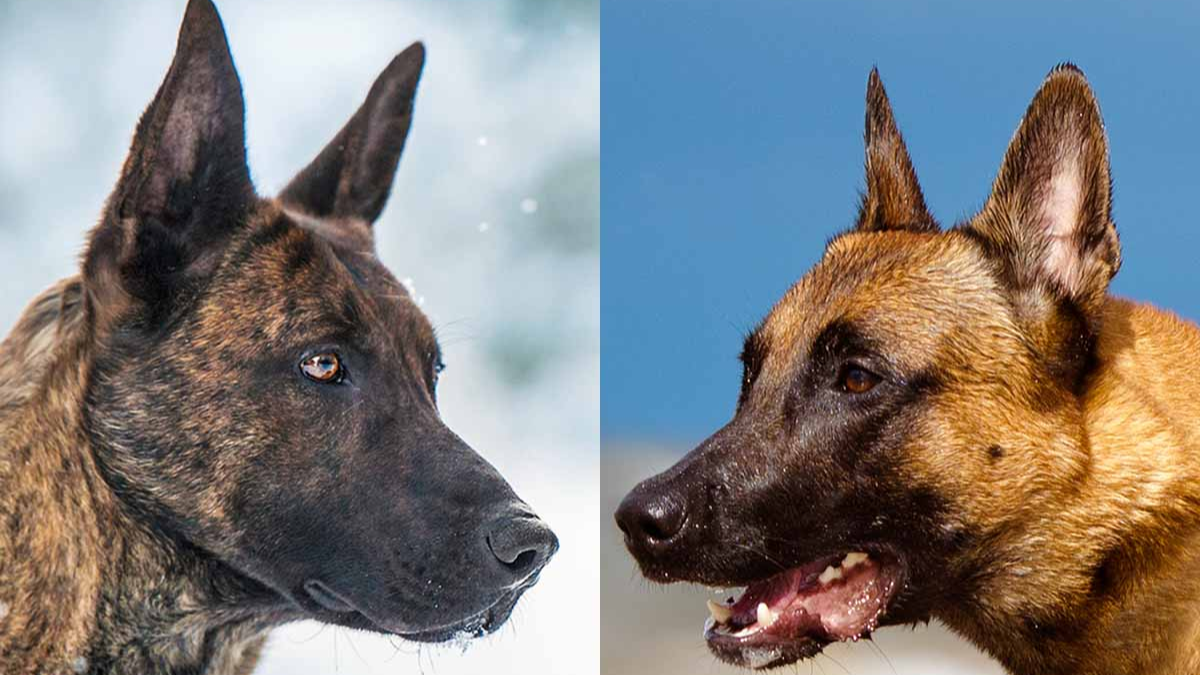
The Dutch Shepherd is a medium-sized dog breed that is known for its versatility and intelligence. They are highly trainable and excel in a variety of tasks such as obedience, agility, and protection work. Dutch Shepherds are also known for their strong work ethic and are often used in police and military operations. Their coats come in three varieties: short-haired, long-haired, and wire-haired, and they can be a range of colors including brindle, black, and blue.
The Belgian Malinois, on the other hand, is a medium to large-sized dog breed that is known for its athleticism and loyalty. They are highly intelligent and have a strong desire to work and please their owners. Belgian Malinois are often used in police and military operations for tasks such as tracking, detection, and protection work. Their coats are short and come in a range of colors including fawn, mahogany, and black.
Breed Origins and History
The Dutch Shepherd and Belgian Malinois are two breeds of herding dogs that have become increasingly popular in recent years. Both breeds have a rich history, and their origins can be traced back to the Netherlands and Belgium, respectively.
The Dutch Shepherd was developed in the Netherlands in the early 1800s. They were originally bred as versatile farm dogs that could handle a variety of tasks, including herding, guarding, and hunting. The breed was created by crossing local dogs with German Shepherds and other breeds, resulting in a dog that was highly intelligent, agile, and loyal.
The Belgian Malinois, on the other hand, was developed in the city of Malines in Belgium in the late 1800s. The breed was created by crossing local farm dogs with other breeds, including the German Shepherd and the Dutch Shepherd. The result was a dog that was highly skilled at herding and guarding, as well as being a great companion.
Both breeds were originally used for herding and guarding livestock, but their skills have been put to use in a variety of other roles over the years. Today, both the Dutch Shepherd and Belgian Malinois are commonly used as police and military dogs, as well as in search and rescue operations and as service animals.

In summary, the Dutch Shepherd and Belgian Malinois have a rich history that dates back to the 1800s. Both breeds were developed in Europe and were originally used for herding and guarding livestock. Over the years, their skills have been put to use in a variety of other roles, and today they are highly regarded for their intelligence, loyalty, and versatility.
Physical Characteristics
Appearance
Dutch Shepherd Dogs and Belgian Malinoiss are both muscular and athletic breeds. They have a similar appearance and are often mistaken for each other. Both breeds have a wedge-shaped head with a pointed muzzle and triangular ears that stand erect. They are also known for their alert and intelligent expression.
Size and Weight
Dutch Shepherds are slightly larger than Belgian Malinois. The average height of a Dutch Shepherd is between 22-25 inches at the shoulder, while the Belgian Malinois stands between 22-24 inches. The weight of a Dutch Shepherd ranges from 50-70 pounds, while the Belgian Malinois weighs between 40-80 pounds.
Coat Types
Both breeds have a short, dense coat that is weather-resistant. Dutch Shepherds come in three different coat types: short-haired, long-haired, and rough-haired. The short-haired variety is the most common and has a smooth coat that is easy to maintain. The long-haired and rough-haired varieties have longer hair on the body and legs and require more grooming.
Belgian Malinois have a short-haired coat that is straight and smooth. They come in three colors: red, fawn, and mahogany. They also have a black mask on their face and black ears.
In summary, Dutch Shepherd Dogs and Belgian Malinois have many physical similarities but also have distinct differences in size, weight, and coat types. It is important to consider these factors when choosing which breed is right for you.
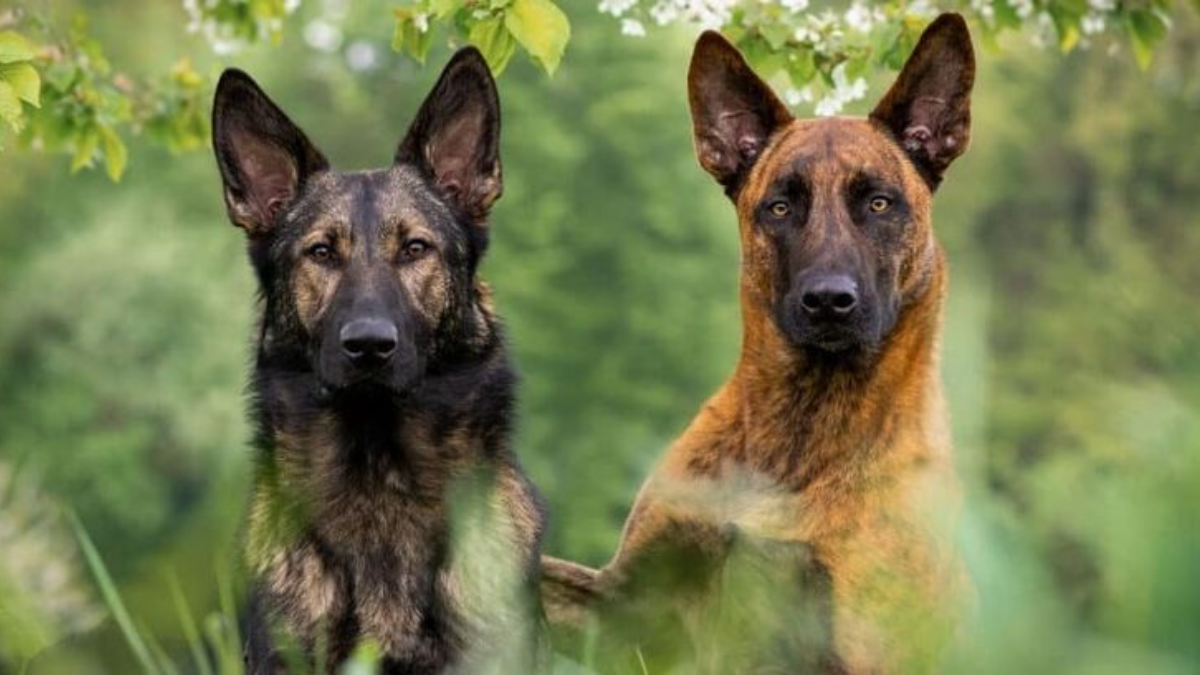
Temperament and Personality
Behavioral Traits
Both Dutch Shepherds and Belgian Malinois are known for their outstanding temperament and personalities. They are intelligent, loyal, and affectionate dogs that make excellent companions, protectors, and working dogs.
Dutch Shepherds are known for their confident and independent nature. They are highly intelligent and have a strong prey drive, making them ideal for various tasks such as herding, guarding, and police work. They are also very active and need plenty of exercise and mental stimulation to stay healthy and happy. Dutch Shepherds are known to be stubborn at times, but with proper training and socialization, they can be well-behaved and obedient.
Belgian Malinois, on the other hand, are known for their high energy levels and intense work drive. They are very intelligent and have a strong desire to please their owners, making them easy to train. They are also very alert and protective, which makes them excellent guard dogs. Belgian Malinois are known to be very active and require plenty of exercise and mental stimulation to stay healthy and happy. They are also very affectionate and loyal to their families.
Family and Social Life
Both Dutch Shepherds and Belgian Malinoiss are very loyal and affectionate towards their families. They are protective of their owners and make excellent guard dogs. However, they can be wary of strangers and other animals, which makes early socialization very important.
Dutch Shepherds are known to be very loving and playful with children, making them an ideal family pet. They are also very protective of their families and will do anything to keep them safe. They are very loyal to their owners and will follow them wherever they go.
Belgian Malinois are also very affectionate and loyal to their families. They are very protective of their owners and will do anything to keep them safe. They are excellent with children, but because of their high energy levels, they may accidentally knock over small children. They are also very social dogs and enjoy being around other animals.
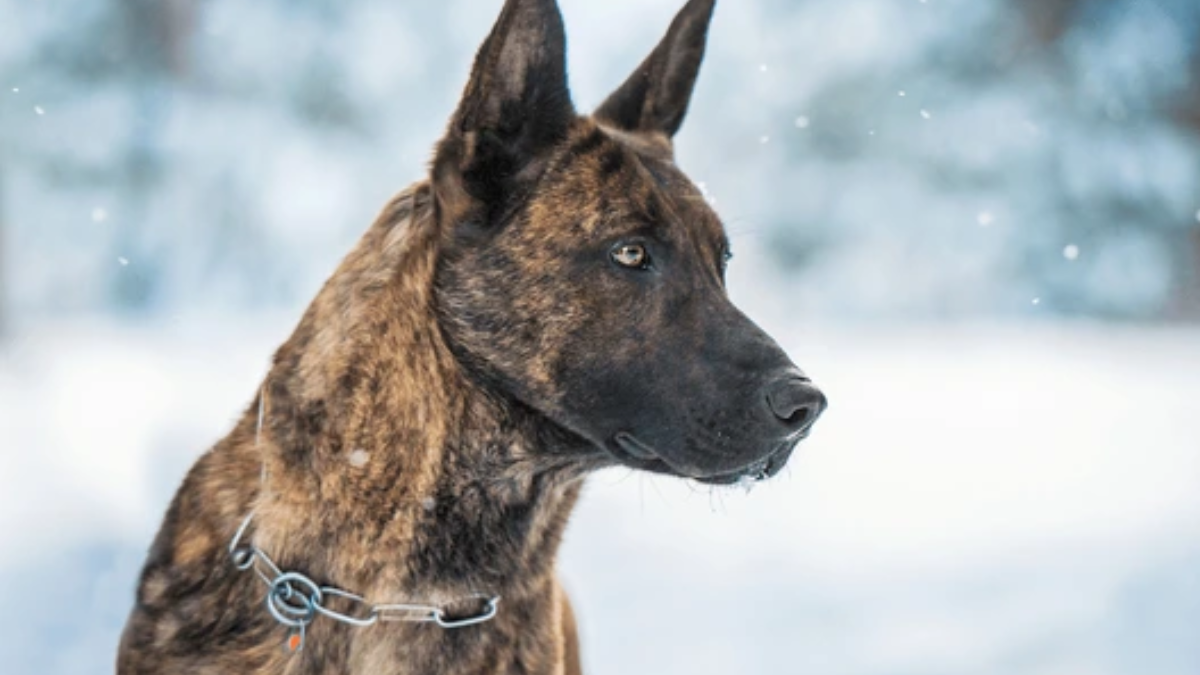
In conclusion, both Dutch Shepherds and Belgian Malinois are excellent dogs with outstanding temperaments and personalities. They are ideal for families looking for a protective and loving companion. However, because of their high energy levels and intense work drive, they require plenty of exercise and mental stimulation to stay healthy and happy.
Health and Lifespan
When it comes to the health and lifespan of Dutch Shepherd Dog and Belgian Malinois, both breeds are generally healthy and have a lifespan of 12-14 years. However, like all dog breeds, they are prone to certain health issues, that potential owners should be aware of.
One of the most common health issues that both breeds can face is hip dysplasia. This is a genetic condition that affects the hip joints and can cause pain and mobility issues. To minimize the risk of hip dysplasia, it is important to ensure that the parents of any puppy have been tested and cleared of the condition.
Another health issue that can affect both breeds is elbow dysplasia. This is a condition where the elbow joint does not develop properly and can cause pain and lameness. Again, it is important to ensure that the parents of any puppy have been tested and cleared of this condition.
Allergies can also be a problem for both breeds, particularly skin allergies. These can be caused by a variety of factors, including diet, parasites, and environmental allergens. If you notice your dog scratching excessively or developing skin rashes, it is important to consult with a veterinarian to determine the cause and provide appropriate treatment.
In conclusion, while both Dutch Shepherd Dog and Belgian Malinois are generally healthy breeds with a good lifespan, it is important to be aware of the potential health issues that can affect them. By ensuring that you choose a reputable breeder who tests their dogs for genetic conditions, and by providing good nutrition and veterinary care, you can help to ensure that your dog remains healthy and happy for many years to come.
Exercise and Training Needs
Activity Requirements
Both the Dutch Shepherd and Belgian Malinois are high-energy working dogs that require plenty of exercise and mental stimulation to stay healthy and happy. They thrive in active households and are best suited for owners who can commit to providing them with daily exercise.
The Dutch Shepherd is slightly less intense than the Belgian Malinois but still requires a significant amount of activity. They enjoy activities such as hiking, running, and agility training. The Belgian Malinois, on the other hand, is known for its high energy levels and work ethic. They excel in activities such as obedience training, agility, and running.
Training and Obedience
Both breeds are highly trainable and have a strong work ethic. However, the Belgian Malinois is often considered slightly easier to train due to its high level of attention and obedience. They respond well to positive reinforcement-based training methods and excel in obedience competitions.

The Dutch Shepherd also responds well to positive reinforcement-based training, but they can be more independent and stubborn than the Belgian Malinois. They require a firm and consistent hand in training to prevent them from becoming dominant or too willful.
In conclusion, both the Dutch Shepherd and Belgian Malinois require plenty of exercise and mental stimulation to stay healthy and happy. They are highly trainable and excel in activities such as obedience training, agility, and running. However, the Belgian Malinois is often considered slightly easier to train due to its high level of attention and obedience.
Care and Grooming
Grooming Essentials
Both Dutch Shepherds Dog and Belgian Malinoiss have short, dense coats that require minimal grooming. However, regular brushing is necessary to keep their coats healthy and shiny. Brushing also helps in removing loose hair and dirt from the coat, which can prevent matting and skin irritation. A slicker brush or a rubber curry comb can be used to groom their coat.
It is also essential to keep their nails trimmed to prevent them from getting too long and causing discomfort to the dog. Regular ear cleaning is also necessary to prevent ear infections. It is recommended to clean their ears once a week using a cotton ball or a soft cloth with a cleaning solution recommended by a veterinarian.
Shedding and Coat Care
Both Dutch Shepherd Dog and Belgian Malinois shed moderately throughout the year. However, they shed heavily during shedding season, which occurs twice a year. During the shedding season, daily brushing is recommended to remove loose hair and prevent matting.
Bathing should be done only when necessary as frequent bathing can strip the coat of its natural oils and cause skin irritation. It is recommended to use a mild dog shampoo and conditioner while bathing. After bathing, the dog should be dried thoroughly to prevent skin irritation and matting of the coat.
In conclusion, grooming and caring for Dutch Shepherds Dog and Belgian Malinois are relatively easy and require minimal effort. Regular brushing, nail trimming, and ear cleaning are necessary for their overall health and well-being.
Suitability as Pets
Compatibility with Children and Animals
Both Dutch Shepherds and Belgian Malinoiss can make great family pets, but they may not be suitable for every family. Both breeds are known for their high energy levels and need for exercise, so families with young children or other pets should carefully consider whether they can provide enough physical activity and socialization for their new pet.
Dutch Shepherds are generally more tolerant of children and other animals than Belgian Malinoiss, making them a better choice for families with young children or other pets. They are also known for their loyalty and protective nature, which can make them great watchdogs.
Belgian Malinois, on the other hand, are more reserved and can be wary of strangers, which can make them less suitable for families with young children or other pets. However, with proper socialization and training, they can make excellent family pets.

Adaptability to Living Environments
Both Dutch Shepherds and Belgian Malinois are highly adaptable and can thrive in a variety of living environments, including apartments and small homes. However, due to their high energy levels and need for exercise, they are best suited for homes with a yard or access to outdoor space.
Both breeds are also highly intelligent and require mental stimulation, so families should be prepared to provide plenty of toys and games to keep their pets entertained. They also require a lot of attention and may not do well if left alone for long periods.
In summary, both Dutch Shepherds and Belgian Malinois can make great family pets, but families should carefully consider their lifestyle and ability to provide enough exercise and socialization before bringing one of these breeds into their home. With proper training and care, both breeds can be loyal and loving family pets.
Breed-Specific Roles and Uses
Both the Dutch Shepherd Dog and Belgian Malinois have been bred for specific roles and uses. Understanding these roles and uses can help prospective owners choose the right breed for their needs.
Police and Military Work
Both breeds are commonly used in police and military work due to their intelligence, trainability, and agility. Belgian Malinois are often preferred for their high energy levels and strong work drive, while Dutch Shepherds are known for their versatility and adaptability to different situations.
Herding and Farm Work
The Dutch Shepherd has a long history of being used as a herding dog, particularly for sheep and cattle. They are known for their ability to work independently and make decisions on their own. Belgian Malinois are also used in herding and farm work but are more commonly used in police and military work.
Guard Dogs
Both breeds make excellent guard dogs due to their protective nature and loyalty to their owners. However, Belgian Malinois are often preferred for this role due to their higher energy levels and stronger protective instincts.
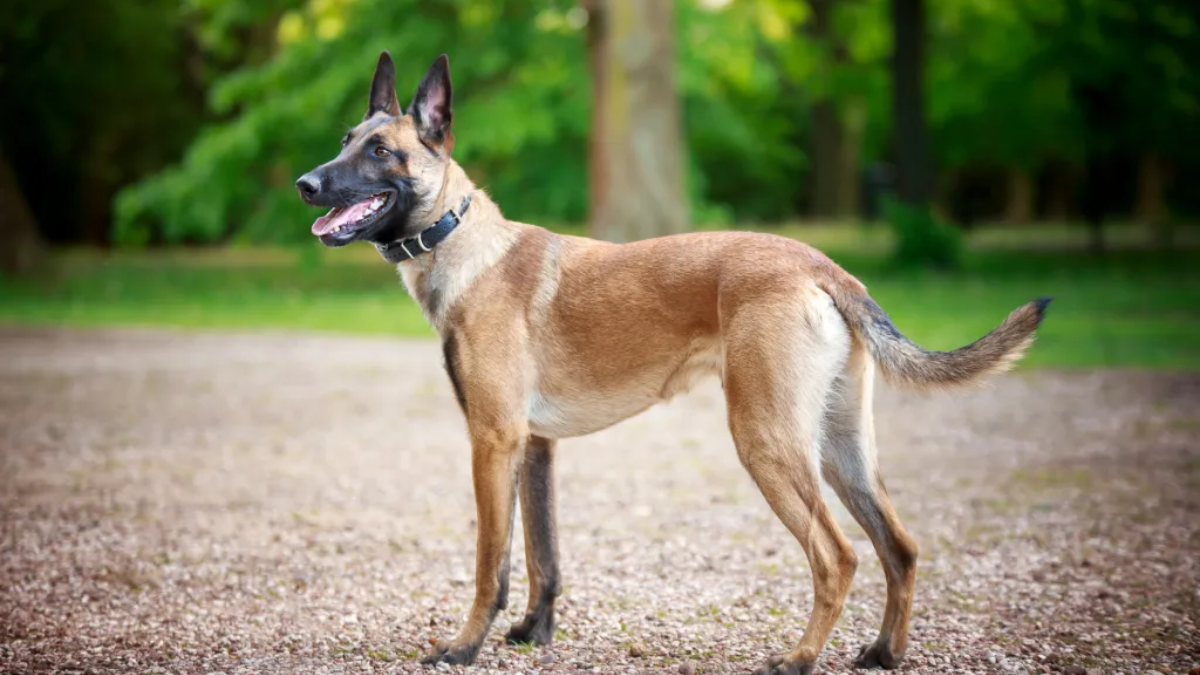
Search and Rescue
Belgian Malinois are commonly used in search and rescue due to their strong sense of smell and ability to work in difficult terrain. Dutch Shepherds are also used in this role but are less commonly seen.
Working Dogs
Both breeds are highly versatile and can be trained for a variety of working roles, including as service dogs, therapy dogs, and even as actors in movies and television.
Overall, both the Dutch Shepherd Dog and Belgian Malinois are highly capable and versatile breeds that excel in a variety of roles. Prospective owners should carefully consider their needs and the specific traits of each breed before making a decision.
Comparative Analysis
Similarities and Differences
Dutch Shepherd and Belgian Malinois are two breeds of dogs that have many similarities and differences. Both breeds are known for their intelligence, loyalty, and athleticism. They are also both used as working dogs and are highly valued by farmers, police, and military personnel.
However, there are some notable differences between the two breeds. Belgian Malinois is a more popular breed than Dutch Shepherd, and it is recognized by the American Kennel Club (AKC) as a breed. On the other hand, Dutch Shepherd is not recognized by the AKC, but it is recognized by other organizations such as the United Kennel Club (UKC).
In terms of physical appearance, both breeds have short-haired coats that come in a range of colors. However, Dutch Shepherds can also have rough-hair coats, while Belgian Malinois only have short-haired coats. Dutch Shepherds are also available in fawn color, while Belgian Malinois are not.
When it comes to energy levels, both breeds are highly energetic and require plenty of exercise. They are also highly independent and can be destructive if not properly socialized and trained. Both breeds are known for their guarding instincts and make excellent guard dogs.
Choosing the Right Breed for You
When choosing between Dutch Shepherd and Belgian Malinois, it is important to consider your individual needs and lifestyle. Both breeds require plenty of exercise and socialization, but Belgian Malinois may be more suitable for those who are experienced with working dogs and have a lot of time to devote to training and exercise.
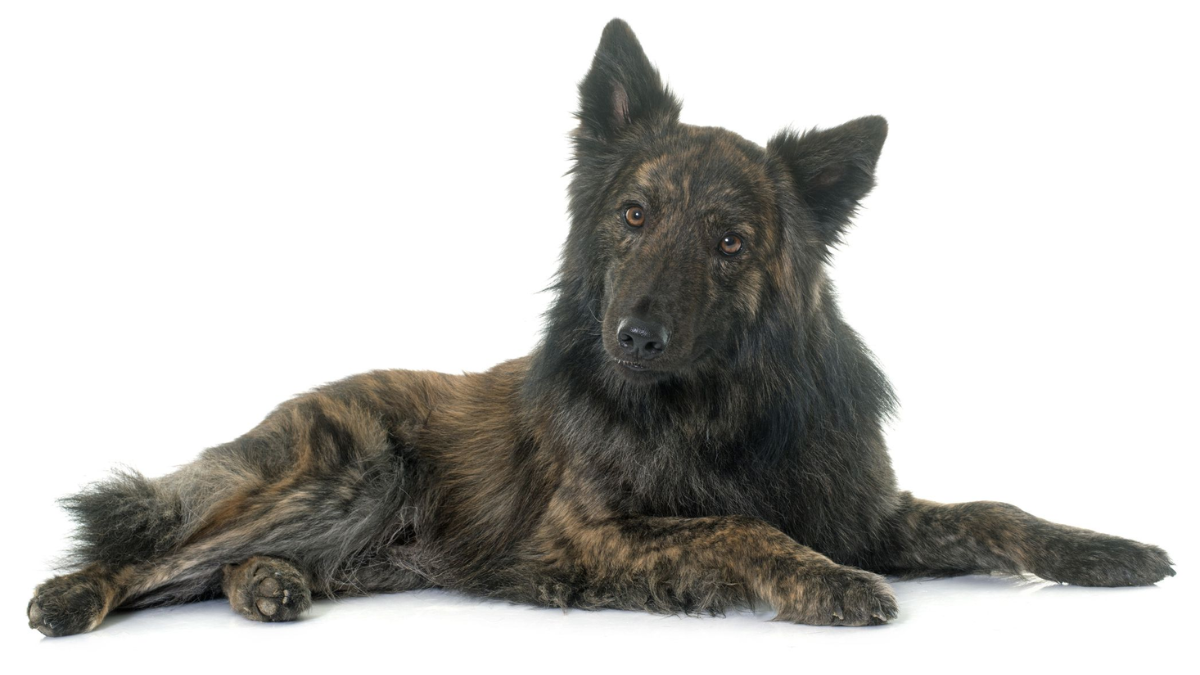
Dutch Shepherds, on the other hand, maybe more suitable for those who want a versatile dog that can adapt to different environments and tasks. They are also known for their loyalty and affectionate nature towards their owners.
Ultimately, the choice between a Dutch Shepherd and a Belgian Malinois comes down to personal preference and individual circumstances. Both breeds are highly intelligent, and athletic, and make excellent working dogs, so it is important to choose the breed that best suits your needs and lifestyle.
Conclusion:
In concluding the comparison between Dutch Shepherd Dog vs Belgian Malinois, it's evident that both breeds share remarkable similarities in their intelligence, loyalty, and versatility. However, they also exhibit distinct differences in temperament and physical characteristics. While Dutch Shepherds are known for their friendly and outgoing nature, Belgian Malinoiss tend to be more reserved and protective. Additionally, Dutch Shepherds typically have a more balanced and moderate energy level compared to the high-drive intensity often seen in Belgian Malinois.
Furthermore, Dutch Shepherds may have a longer coat with a softer texture, while Belgian Malinois have a shorter, denser coat. These variations in temperament and physical attributes should be carefully considered by potential owners when choosing between the two breeds.
Ultimately, both Dutch Shepherds and Belgian Malinois can make excellent companions for experienced owners who can provide them with the mental and physical stimulation they need. Understanding the unique traits and requirements of each breed is essential for selecting the right fit for individual lifestyles and preferences.
Frequently Asked Questions
- What are the main temperament differences between Dutch Shepherds and Belgian Malinois?
- Both Dutch Shepherds and Belgian Malinois are highly intelligent, active, and loyal breeds. However, Dutch Shepherds are generally more independent and have a strong protective instinct, while Belgian Malinois are more obedient and have a higher drive to work.
- How do the sizes of Dutch Shepherds compare to Belgian Malinois?
- Dutch Shepherds and Belgian Malinois are similar in size, with males typically weighing between 60-75 pounds and females weighing between 40-60 pounds. However, Dutch Shepherds are slightly taller and have a more muscular build than Belgian Malinois.
- Which breed is generally considered better for a family environment, Dutch Shepherd or Belgian Malinois?
- Both Dutch Shepherds and Belgian Malinoiss can make great family pets with proper socialization and training. However, Dutch Shepherds may be more suitable for families with children due to their protective nature and calm demeanor, while Belgian Malinoiss may be better for experienced dog owners who can provide them with the exercise and mental stimulation they need.
- What are the distinctive physical characteristics between Dutch Shepherds and Belgian Malinois?
- Dutch Shepherds have a long, wiry coat that comes in shades of brindle, grey, and gold. They have a wedge-shaped head and pointed ears that stand erect. Belgian Malinois have a short, smooth coat that is typically fawn or mahogany with black tips. They have a square-shaped head and slightly rounded ears that stand erect.
- How do Dutch Shepherds and Belgian Malinoiss differ in their training and exercise needs?
- Both breeds require a lot of exercise and mental stimulation, as they were originally bred for herding and working. However, Belgian Malinois may require more intense training and exercise due to their high energy levels and work drive. Dutch Shepherds may be more adaptable to different training methods and exercise routines.
- Can Dutch Shepherds and Belgian Malinois get along with other pets?
- Both breeds have a strong prey drive and may not be suitable for households with small animals such as cats or rabbits. However, with proper socialization and training, they can coexist with other dogs and pets in the household. It is important to supervise interactions and provide plenty of exercise and mental stimulation to prevent any unwanted behavior.




